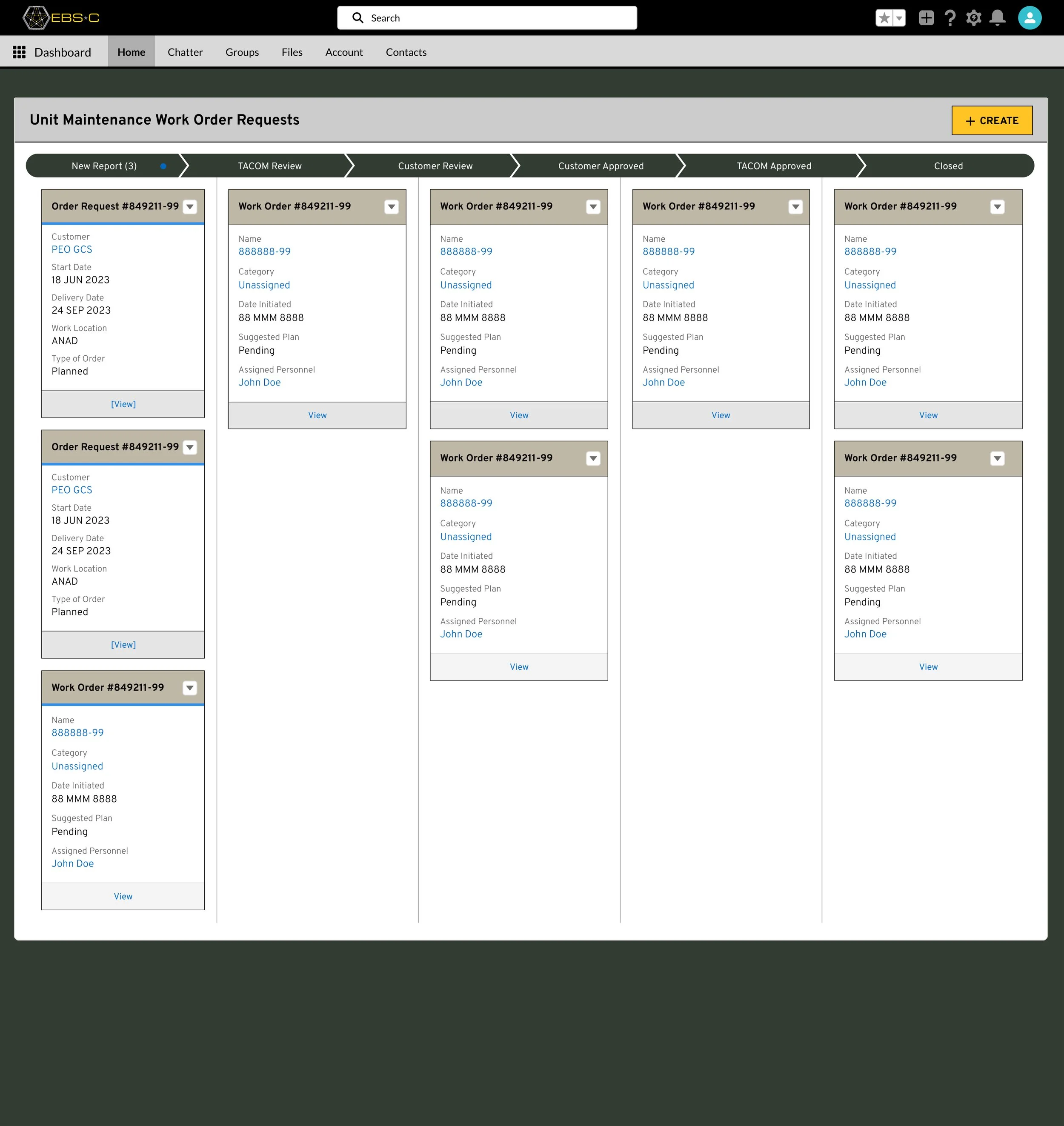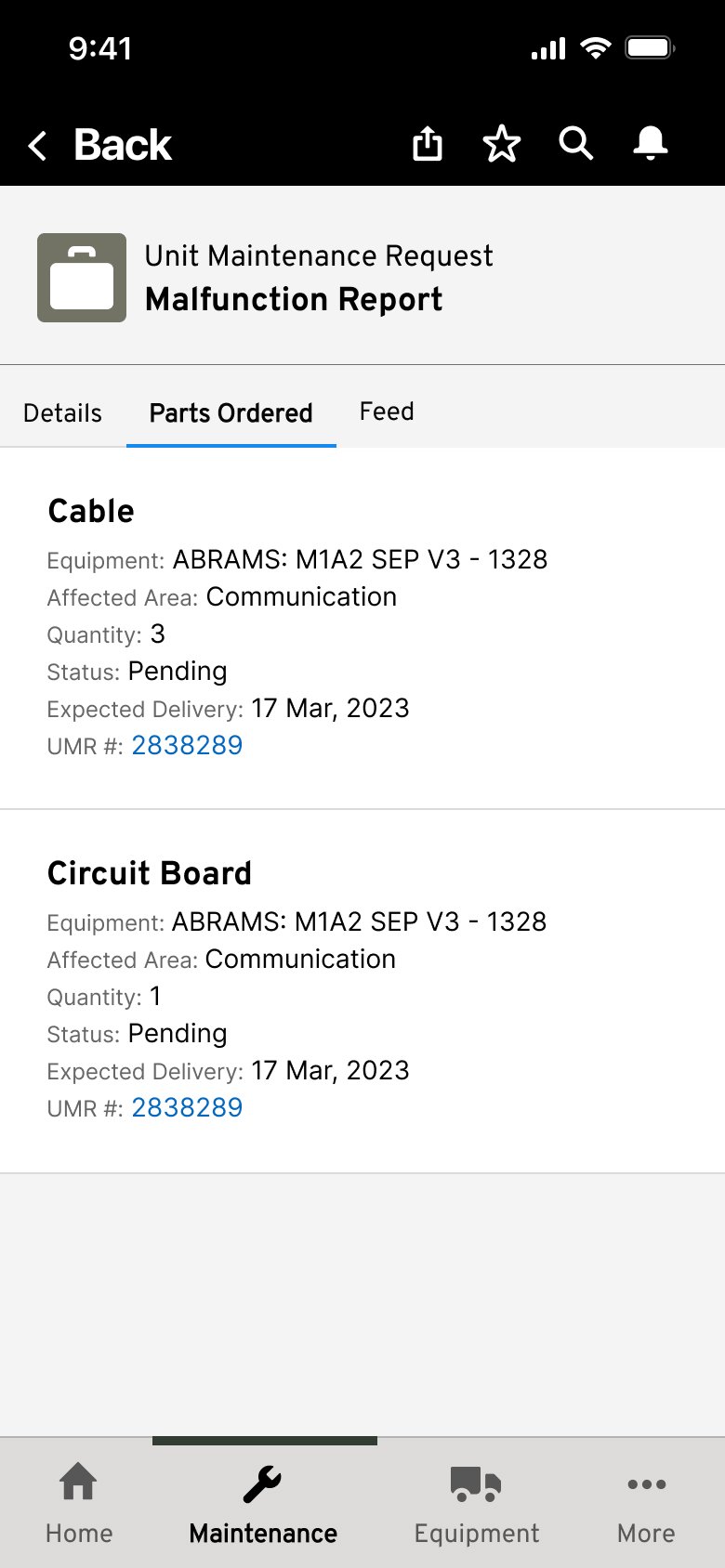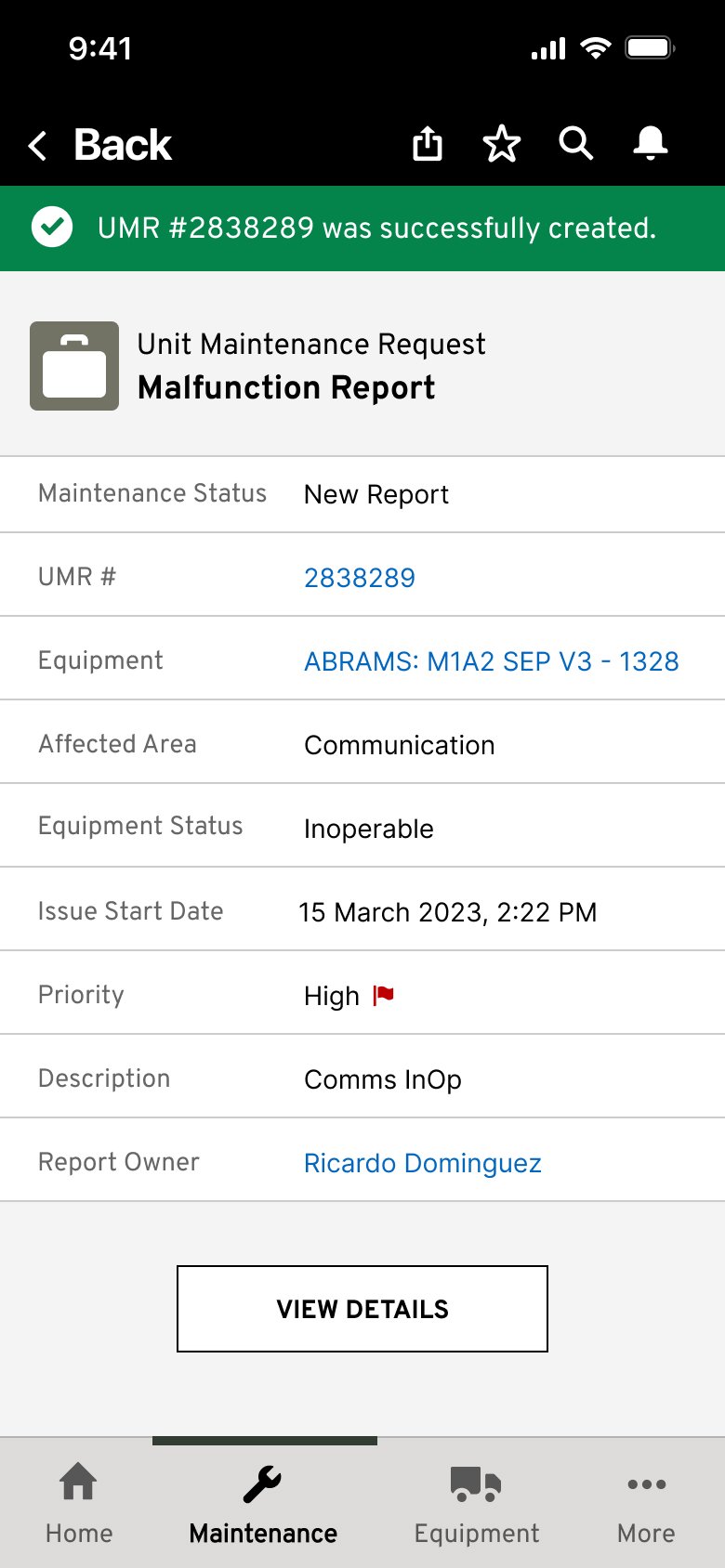Client
United States Army
Summary
The Army is investing in EBS convergence to transform their operational backbone of enterprise business systems, improve their agility and enable readiness, generation, modernization, and direct business-related support, supported by a cross-functional and matrixed organization — aka Project R.E.L.O.A.D. (Readiness Enhancement through Logistics, Operations, and Actions for Defense)
Creative Direction, Design Strategy, Persona Creation, Process Mapping, Information Architecture, AA Compliance, AI/ML Support, Agile UX Leader
Responsibilities
ON GOING
Project Time
The Scope
The scope of work for the EBS convergence effort will involve reengineering existing processes and developing the necessary requirements to improve the agility and information-sharing capabilities of the Army's enterprise business systems, enabling readiness, generation, modernization, and direct business-related support from the strategic support area to the tactical edge, with the support of a cross-functional and matrixed organization.
Team Guiding Principles
Army capabilities/requirements will be reviewed on a case-by-case basis
Use Case design/working sessions
Functional Capability Matrix
Development of orals presentation ‘story’ for technical demonstration
Minimize SAP customizations – Enhanced User Experience
Commercial as possible w/out of the box SAP
Military as necessary w/leveraging improved UI/UX capabilities through the agility layer
Bridging strategy w/leveraging EDIP to keep S/4 HANA / ECC Legacy in sync throughout rollout
The agility layer WILL provide a single source of entry for end users – the technology behind the screens (SAP ECC, SAP S/4HANA, SF, Other) will be transparent to the user
Agility layer will provide full transparency to the end user during rollout
Ask ourselves…
•If the SAP capability out of the box is user-friendly and meets the need – leverage SAP S/4 HANA
If the SAP capability is functional but not user friendly – leverage the agility layer
If the SAP capability is functional but there is an opportunity to reduce the transactional burden on the end user by consolidating steps – leveraging the agility layer
Use Cases
Use Case 1: Contract Procurement and Inventory/Warehouse Management
Demonstrate demand forecasts and "What If" analysis:
Using actual demand data, facilitate demand forecasts and what-if analyses to generate demand, supply and aggregate plans for end items and dependent demand and supply for subcomponents and packaging. Demonstrate tools, technologies and methods of enabling leading process best practices of demand sensing and supply chain collaboration.
Define where cognitive enterprise solutions, such as Robotic process automation (RPA), Artificial intelligence (AI) and / or machine learning (ML) may be applied,Demonstrate Budget Activities:
Ensure availability of budget by budget-address [Appropriation or Revenue (Fund), Funding Organization (Funds Center), Program (Functional Area), Category (commitment item), Project (Funded Program) or Equivalents];
Funds Availability Checks are performed in accordance with Office of Management and Budget (OMB) Circular A-11, Section 150.2.
Budget controls are not bypassed in Delayed/Disconnected, Intermittently Connected, Low-Bandwidth [DDIL] scenariosExecute material receiving, quality inspection and acceptance, discounts, penalties / interest / administrative fees, and initiate warranty provisions if applicable, Facilitate AIT Integration, Unique/ Serialized Item Tracking and Inventory Storage Optimization
Conduct warehouse management w/ munitions-unique inventory requirements (net explosive weight (NEW) and co-storage compatibility confirmation and conflict identification), Facilitate AIT Integration, Unique/ Serialized Item Tracking and Inventory Storage Optimization
Facilitate equipment fielding and distribution based on organization / unit's Modified Table of Organization and Equipment (MTOE), Table of Distribution and Allowance (TDA), Common Table of Allowances (CTA) authorizations by material type and unit/ activity priority,
Use Case 7: Reimbursable Remanufacturing
Enable recapitalization requirement to be initiated by Army General Fund PM to Army Working Capital Fund Depot remanufacturing activity via reimbursable requirement,
Establish AWCF reimbursable project for recapitalization requiring materials held in stock, materials for purchase, organic labor and contractor labor,
Execute recapitalization program production order by national depot activity; facilitate carcass consumption (e.g., issue material to material, demilitarize some pieces, and associate costs), balance sheet transfers of materials & assets, and subcontracting arrangements,
Enable periodic updates on production order process and projected delivery date(s),
Accumulate cost of new capability for capitalization as a sub-asset (in association with the main / parent asset); demonstrate how the cost of remanufacturing might have been added to the net book value of an asset to arrive at the depreciable basis of the new asset in a similar reconfiguration scenario (e.g., change from NSN 'A' to NSN 'B'),
Demonstrate cost reporting by performing entity (e.g., Army organic materials and labor vs external contractor materials and labor),
Conduct AWCF reimbursable billing / progress billing for recapitalization versus distinct coincidental maintenance (categorize by actual material inputs, actual labor hours confirmed, and actual contract services used; support billable rates distinctly for each distinct activity and for each reimbursable agreement and for each fiscal year / period),
Conduct AWCF reimbursable billing / progress billing for recapitalization versus distinct coincidental maintenance (categorize by actual material inputs, actual labor hours confirmed, and actual contract services used; support billable rates distinctly for each distinct activity and for each reimbursable agreement and for each fiscal year / period),
Personas & Processes
When I inherited the personas from the previous team, I took the time to review them and ensure they were still relevant to our current design process. While the personas themselves were well-developed and provided valuable insights into our users, the Army’s processes had changed since their creation, which meant that their placement and context within our current designs needed to be carefully considered.
To address this, I refined and updated the personas to reflect any changes in our processes and ensure that they accurately represented our users' goals, needs, and pain points. By doing so, I was able to create a more cohesive and effective narrative around our users and their experiences.
Overall, the UX personas section of my portfolio is a testament to my ability to not only develop detailed personas but also to critically evaluate and refine existing personas to ensure they remain relevant and useful in our design process.
Personas
Process Architecture & Readiness Flow
The Process Maps
Defining the Solution: Project Reload
The primary objective of this project is to streamline maintenance, replenishment, and redeployment processes for manned units and specialty vehicles in order to enhance military operations. This will be accomplished through the implementation of cutting-edge artificial intelligence and machine learning technologies that will redefine item procurement thresholds, improve resource management procedures, and optimize delegation and allocation processes.



















































